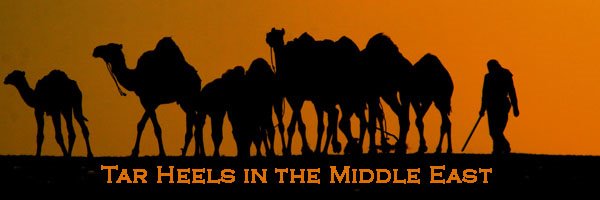Matthew Garza
The
Office of the United Nations High Commissioner for Refugees (UNHCR) has
reported on the massive Iraqi
refugee situation here in
Jordan.
Most estimates put the population at somewhere between 700,000 and 1 million people who have fled the rages of war across the eastern border, all the more remarkable considering this country’s entire population is 5.8 million.
In
Jordan, it is common that they face challenges of
poverty and
discrimination (remember that colloquial dialects make different Arabs easily recognizable).
One of many unfortunate consequences of the recent war in
Iraq.
The magnitude of the Iraqi refugee population here is shocking at first, but this story is sadly all too common throughout the history of Jordan. Fully 65 percent of Jordanians are Palestinian, and while not all of them are refugees (Jordan has had several programs to grant citizenship to Palestinians in the past), the second half of the 20th century has seen several massive influxes of Palestinians seeking asylum. Following the creation of Israel in 1948, Jordanian troops took control of East Jerusalem and the West Bank after which 100,000 Palestinians fleeing to the kingdom doubled the population. When Israel captured these lands in the 1967 Six Day War, another 350,000 found their across the border. Finally, Saddam Hussein’s invasion of Kuwait forced 500,000 people working in the Gulf to flee to Jordan, a significant number of which were Palestinian. All in all, some 700,000 Palestinians have arrived in Jordan over the last fifty years.
Recently I took part in a FINCA-sponsored expedition to look for office space close to the people who will receive our loans. Naturally we spent time exploring the refugee camps (largely located on the outer limits of the capital city), but these camps do not quite conform to images I have seen of refugees in Sudan and Tanzania. No tents. No huts. No endless food lines for the World Food Programme. The camps here look strikingly like many other neighborhoods in Amman with their own apartments, commercial buildings, and schools. I guess refugees settle down after a half century or so away from home. The catch is, refugees cannot own land in Jordan. They are forced to rent and thus suffer from a lack of capital (no loans against the home). Also, the children do not attend schools with other Jordanians. The UN operates its own school system for refugees here in Amman. And these are just two of countless structural disadvantages of being a refugee in Jordan.
Living life as second-class citizens, Palestinian refugees can find solace in one recent success. There are two soccer clubs here in Jordan: Faisaly, supported predominantly by Jordanians, and Wahadat, a team based in one of Amman’s larger refugee camps, a perfect athletic complement to mirror the societal divisions. Last Wednesday Wahadat took glory in the most recent meeting of these cross-town rivals and the streets went wild. A small victory in an otherwise trying existence. Don’t be surprised if an Iraqi team springs up in the next few years.
.....
As a small extension of this post, check out this article from the New York Times about the Iraqi refugee population in Syria and their role in the burgeoning Middle East sex trade.

3 comments:
Refugees and soccer and Matt Garza. You know youve condensed all my favorite buzzwords into one blog posting. The blog is a stroke of brilliance and I'm loving it. Keep on keeping on, everyone.
Impressed, as always. Can you find youth soccer teams to observe or hang out with? Tell them its all a part of research... what a great way to learn Arabic.
Dildo Amateur Sex
Telefonsex Chat
Privatcams
Post a Comment